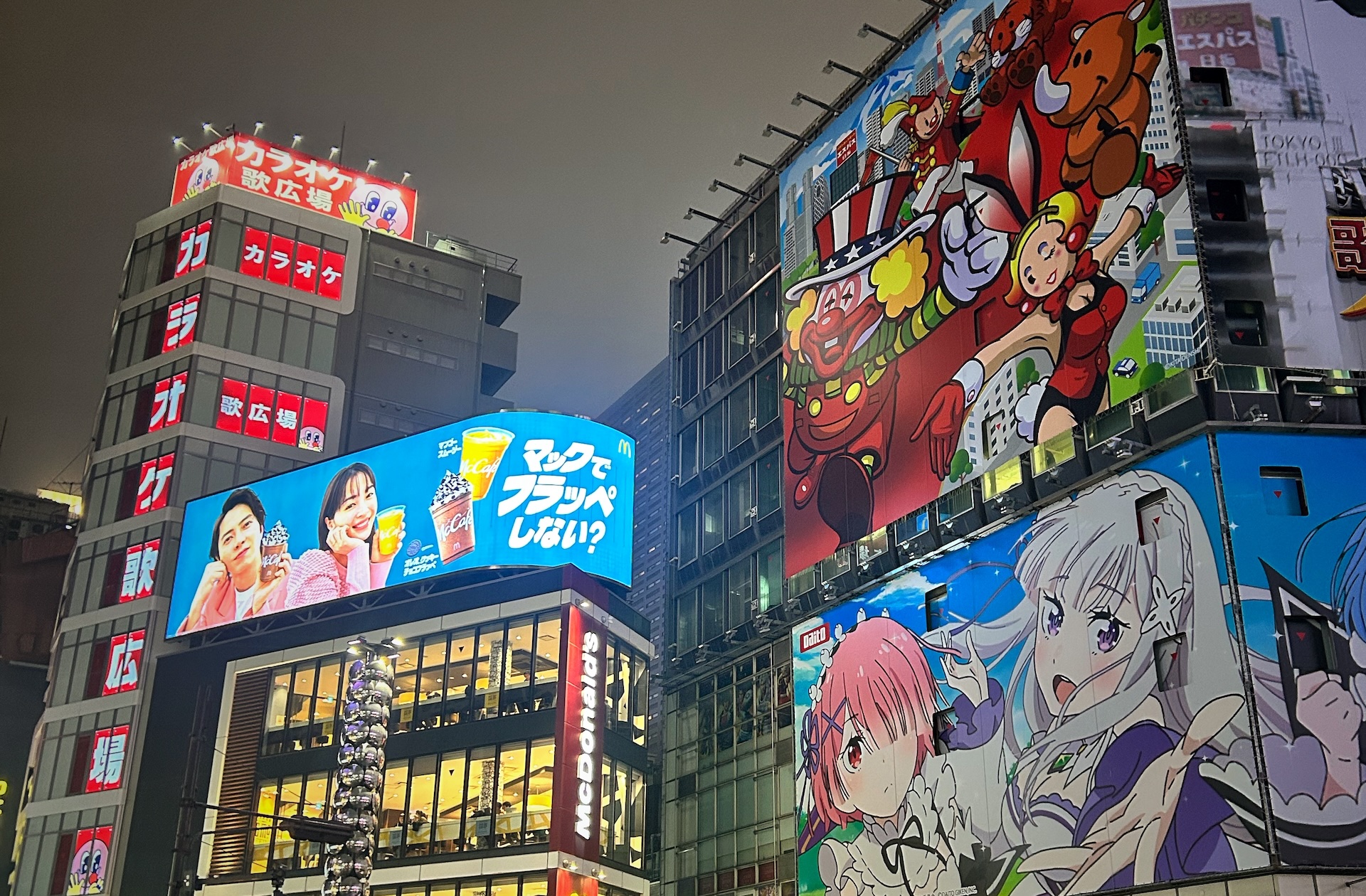Where to Eat in Tokyo: From Alleys to Elevators - The Food Guide
Where to eat in Tokyo: ramen, sushi, yakitori & tonkatsu, Tabelog reservations, etiquette, and hidden upstairs counters—from Shinjuku to Asakusa
We spent a full month in Japan this year, and the experience exceeded our expectations in every way. That's why it took me half a year to finally sit down and write everything we experienced in our trip.
This is the first piece in our Japan series, and it starts where it should: the capital, Tokyo.
It would be a bad joke to pretend we even "scratched the surface" of the city's food scene. That's impossible in a place where you can eat something interesting on every single block.
What I can do is share how Tokyo eats, how to choose where to go, and the specific places we tried—plus what we'd do again.
A quick note: we didn't chase breakfast venues because our accommodations included it. Also, prepare for small rooms at premium prices. Part of Tokyo's charm is how much life the city stacks vertically on a tiny footprint.
Before We Get to the Good Stuff: A Quick Travel Tip
Before we dive into where to eat in Tokyo, a small thing that can save a big headache: travel insurance.
Tokyo isn’t remote, but it is vast and fast. Typhoon season can nudge flights, trains, or plans; luggage goes missing; ankles get tweaked on temple steps; phones meet puddles; and yes—street crossings and packed stations can be, well, a lot. Clinics often expect upfront payment, and last-minute changes add up quickly. That’s why we always travel with SafetyWing. It’s affordable, flexible, and built for people who hop between cities, whether you’re a first-timer, a casual traveler, or the “I have five tabs open for tomorrow” type.
It’s not about expecting trouble. It’s about enjoying Tokyo’s chaos with a little extra calm. With that sorted, let’s get to the reason you’re here—the food.
Tokyo on a Plate: How the City Eats (and Why It Feels Affordable)
What I love about Japanese cooking is how ordinary meals feel seasonal and balanced without being fussy.
Tokyo makes that visible at street level: a noodle counter tucked beside a business tower, a homestyle lunch set (teishoku) next to a seven-seat tempura bar, a quiet soba shop one elevator ride above a sweets counter.
Many of us arrive in Japan thinking of sushi and ramen, which is fair. But the city's everyday table is far wider—grilled skewers in snug izakaya, rice bowls with brothy miso on the side, crisp tonkatsu, curry rice that tastes like a hug, and department-store food halls where you can graze for less than a café lunch back home.
We expected an expensive month. The surprise? Eating out, most days, costs less than in many European capitals—especially at ramen shops, izakaya, standing sushi counters, and food halls.
High-end meals will still be high-end anywhere, but Tokyo excels at good, honest cooking for a sensible price. Consider that your green light to explore.
Queues vs. Reservations (and How We Actually Booked)
Tokyo is perfectly happy to queue an hour for a cult bowl or an eight-seat counter. Let's just say that we're… less zen. We booked as many dinners as possible. Tabelog was our workhorse for discovery and reservations.
When a place didn't list bookings there, we messaged on Instagram or emailed directly.
One small but useful tip: people in Japan don't use WhatsApp. If you need a local app, it's LINE.
The net effect of planning ahead? Less time in line, more time eating.
"Look Up" Dining: Why the Best Meals Aren't Always at Street Level
Don't judge a restaurant by its storefront. Some of the best plates we met were up an elevator behind a plain door on the 6th floor—or two levels underground, past a quiet hallway.
Tokyo stacks restaurants the way it stacks apartments and offices, so gems hide in ordinary buildings. Check the lobby directory, ride up, and peek in. It's half the fun.
Where We Ate (and What We Learned)
Below are the venues we tried, plus what stood out. For each one, I've added a broader context so you can decide if it fits your own Tokyo food tour.
Wagyu Yakiniku Rojiura (Shinjuku Back Alley Branch) — Our "Welcome to Tokyo" Grill
Shinjuku isn't just busy; it's a thumping heart that never fully slows. By day, the station pours people into a maze of avenues and alleys; by night, Kabukichō glows with bars, grills, karaoke boxes, and more neon than you thought existed.
We chose Wagyu Yakiniku Rojiura ("Back Alley") as our soft landing for our first dinner: a private room, a clear tasting set, and wagyu that allows you to learn the cuts without over-engineering the order.
Was it a bit touristy and pricier than a neighborhood joint? Yes. Did it feel like precisely the calm, structured welcome we needed after 48 hours of travel and time-zone whiplash? Also yes.
If you're new to the format, think of yakiniku as DIY steak night, sliced thin and cooked fast.
You sit around a built-in grill, set down beef (often wagyu, sometimes offal), turn it once or twice, and dip into a sweet-savory tare.
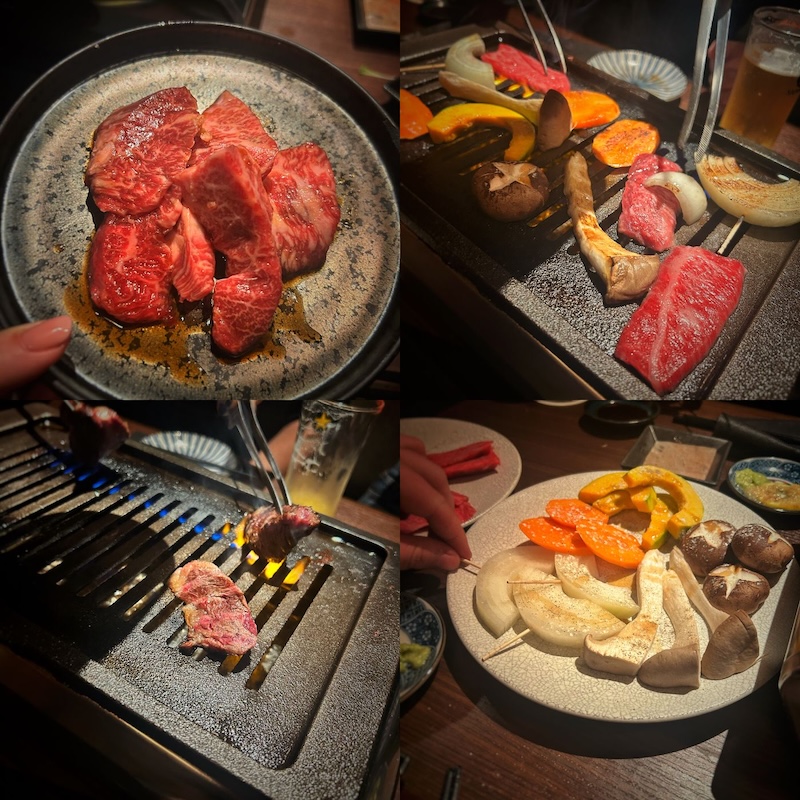
It's interactive and strangely soothing. Everyone cooks, everyone shares, the plate keeps changing.
Rojiura's sets guide you from lean to rich cuts, and the staff will happily pace you so you don't rush the good stuff.
Part of Rojiura's value lies in its location. If you're hunting good places to eat in Shinjuku, use this as a launchpad: dinner here, then a late wander through Omoide Yokocho or a peek into Golden Gai's tiny bars.
Just remember that Shinjuku Station can be its own labyrinth. Give yourself time to navigate—getting lost is normal and part of the story.
Roughly what to expect: comfortable booths or a small private room, friendly staff, tasting sets that remove decision fatigue, and quality wagyu that delivers the "oh, so that's what this cut should taste like" moment. If your first night in Tokyo needs a sure thing, start here.
Sumibi Kushiyaki Kemuri (Kichijōji) → Drinks in Harmonica Yokocho — A Perfectly Casual Night
Kichijōji is one of Greater Tokyo's most livable neighborhoods: leafy park, independent shops, and an evening scene that feels young without the crush.
Kemuri (which means "smoke") is a charcoal-grill specialist with the atmosphere to match.
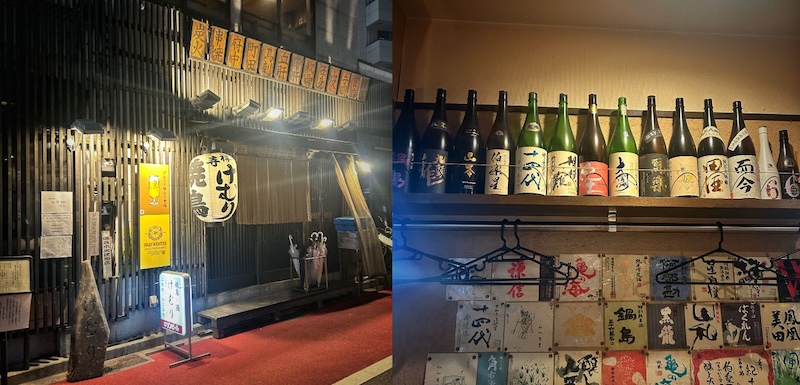
Here, yakitori distills chicken to its essence: thigh, scallion, crisped skin, liver, heart—small skewers kissed by binchōtan and seasoned either with salt or a glossy tare.
Order a handful of standards (negima, momo, tsukune) and then add a curveball or two (skin, cartilage, liver) to understand how texture changes the experience.
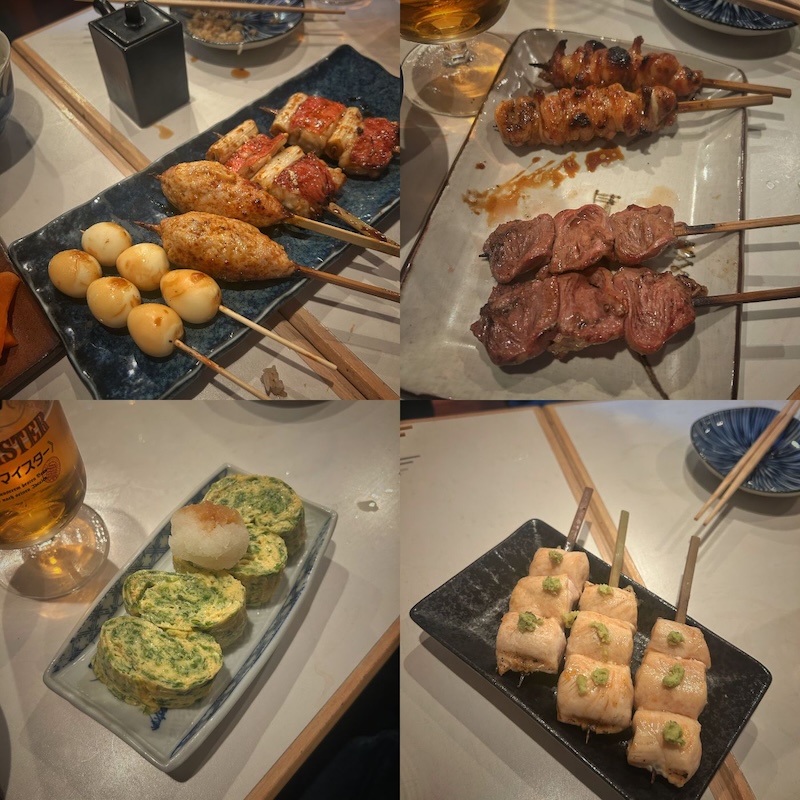
The counter is the best seat in the house: you can watch the rhythm of the grill, the brush of tare, the quick twist of the wrist that keeps the heat even.
What makes the evening sing is the one-two punch with Harmonica Yokocho next door.
It's a tangle of narrow lanes packed with tiny standing bars and snack counters, the kind of place where you end up shoulder-to-shoulder with locals, sipping something cold and trading small talk over a chalkboard special.
So, if your idea of the coolest restaurants in Tokyo includes rooms that feel lived-in rather than choreographed, this pairing is a bull's-eye. Arrive early, expect a buzz, and let the neighborhood carry you.
Roughly what to expect: quick service, skewers that vanish as fast as they land, clinking highballs, and a relaxed, social hop into Harmonica when you're done. Budget-friendly, deeply satisfying, and very, very Tokyo.
Tokichirō (Asakusa) — The Spicy Tantanmen I Still Think About
We ate so many bowls of ramen that I lost count, and each one felt like a new dialect of the same language.
If you want a name to anchor you, my personal favorite was the spicy tantanmen at Tokichirō in Asakusa—creamy sesame richness, a proper peppery tingle, and balance that keeps you chasing one more slurp.
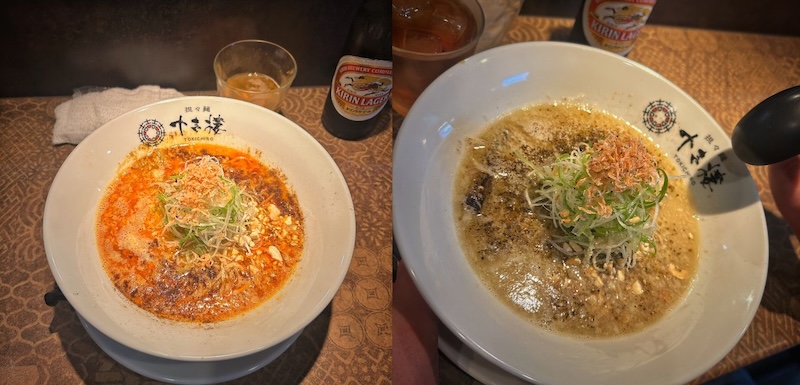
The shop is compact and efficient: buy a ticket at the machine, hand it over, and your bowl lands in minutes. Because it's a short walk from Sensō-ji, it's easy to fold into a sightseeing day.
Furthermore, Asakusa is also where I suggest you do your kitchen shopping: Kappabashi (Kitchen Town) is a stretch of stores selling knives, pans, ramen bowls, and all the kits locals actually use.
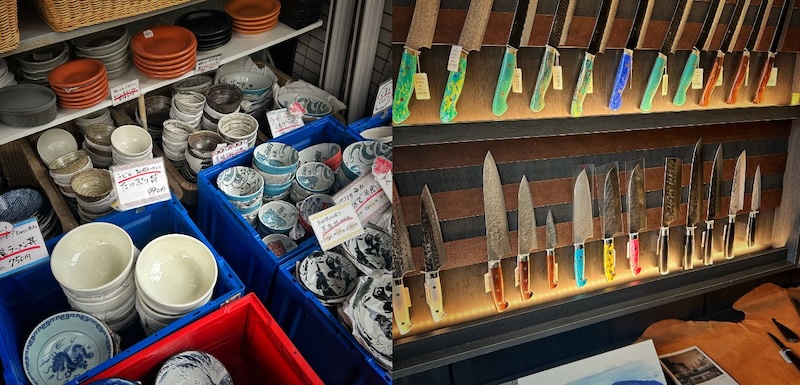
Prices range from friendly to collector-grade, but you'll find honest tools and staff who know their stock.
If you're building your own ramen tokyo crawl, slot Tokichirō as the spicy anchor, then bracket it with a clean shōyu somewhere else and a rich miso for contrast.
Roughly what to expect: tantanmen in white- or black-sesame styles, a simple spice slider so you can calibrate your heat, tight seating, and a steady turnover. It's exactly the kind of lunch that makes you think "okay, one more noodle shop won't hurt," and then it's 8 p.m. and you've had three bowls.
Tachigui Sushi Tonari (Setagaya) — The Meal That Reset My Bar for Sushi
Tachigui literally means "stand and eat," and Tachigui Sushi Tonari elevates that format into something serene and laser-focused. The room is compact and calm; attention is on your bites and the chef's rhythm.
We booked a tasting and added sake. Piece after piece landed with the kind of clarity that makes you slow down: rice seasoned to lift, not mask; fish treated with intent—aging and temperature decisions you can taste without being told.
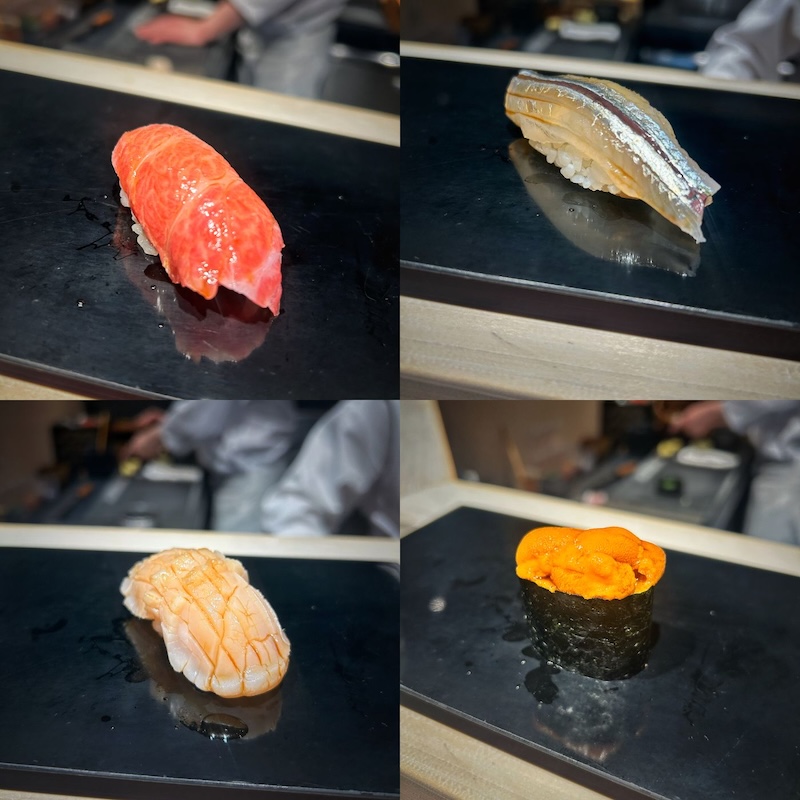
My "is this beef?" moment came with fatty tuna so clean and rich my brain filed it under "steak" for a second before catching up.
Tonari sits away from the tourist scrums, which helps the mood and the pacing. It's elegant without theater, serious without being stiff, and it delivers the exact reason you came to Tokyo for sushi in the first place: a quiet, concentrated dialogue between rice and fish.
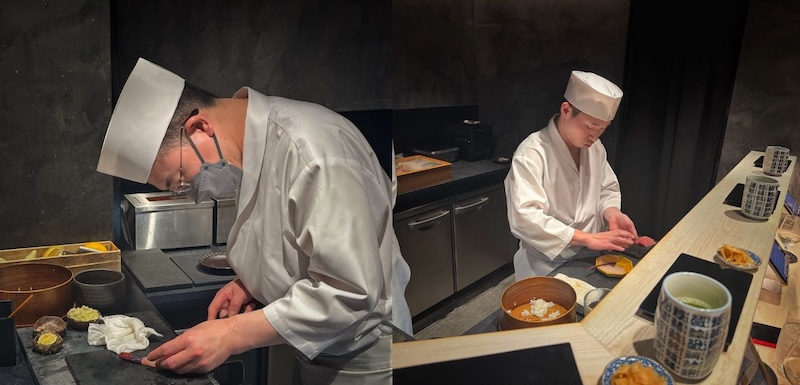
If you only splurge once, consider this. For us, it's not only the front-runner for best sushi place in Tokyo but the winner of the best sushi we've had in our lives.
Roughly what to expect: a concise omakase, a chef who watches your cadence, a sake list that supports rather than steals the scene, and a room where every detail says "we care." Book ahead, arrive on time, and let them lead.
Tonkatsu Keita (Suginami / Nishi-Ogikubo) — A Small Counter That Does One Thing Perfectly
Skip the German schnitzel when you can have Tokyo's own art form: tonkatsu. Our favorite in the city was Tonkatsu Keita in Suginami's Nishi-Ogikubo area—a tiny under-the-radar kind of place where locals eat.
The cutlet comes out with a glass-thin panko crust that shatters, pork inside still juicy, cabbage piled high, rice and miso on the side.
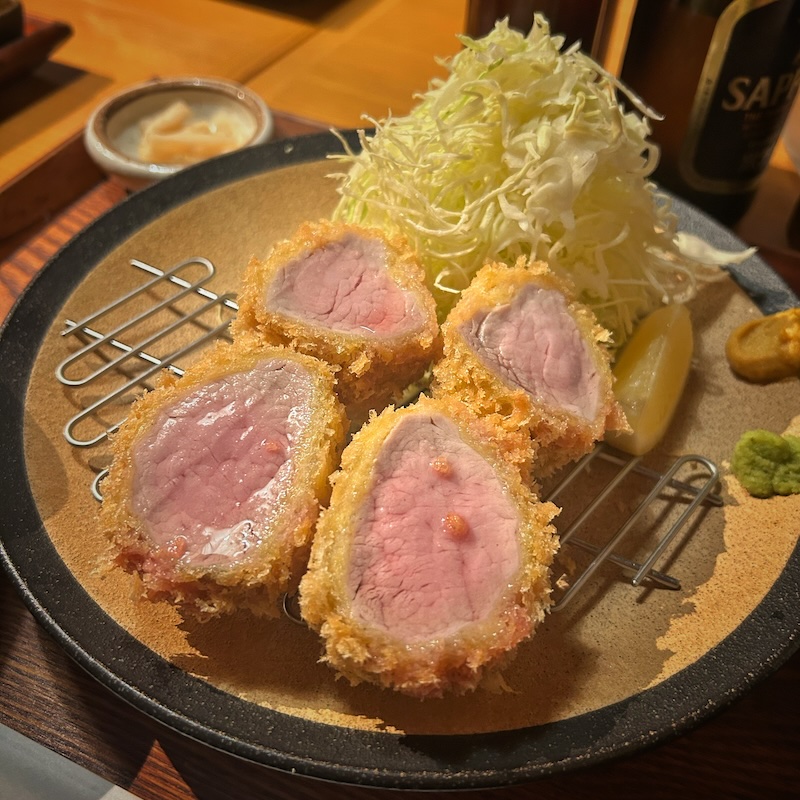
There's no performance here, just skill and repetition—the quiet confidence of a shop that knows exactly what it does well.
This is what "eat local" means in Tokyo: the neighborhood spot that doesn't advertise, doesn't chase trends, and still packs out because the craft is impeccable.
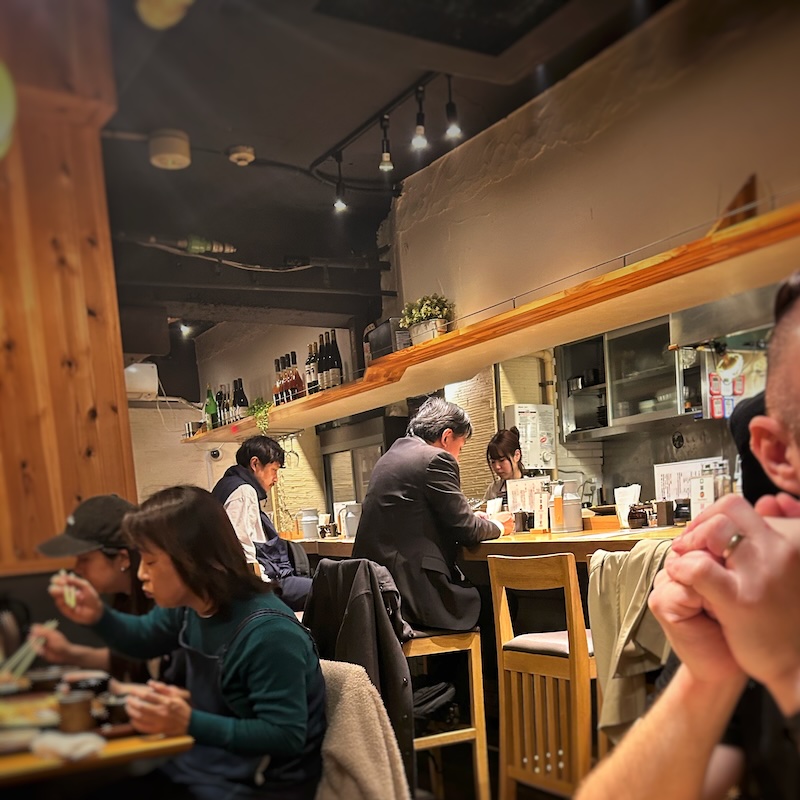
If you're mapping a personal Tokyo food tour, slot Keita as your tonkatsu benchmark, then compare it with a long-running classic elsewhere to feel how cut choice, oil temperature, and breadcrumb grind change the bite. The room is small. So, book a table, go early, or be ready to wait a bit. Prices are friendly for the quality.
Roughly what to expect: limited seating, a counter view of slicing and plating, perfectly cooked pork, mountains of cabbage you'll somehow finish, and the pleasant hum of a place feeding its neighbors.
Series (Minato) — A Starry Splurge That Feels Joy-First, Not Show-First
Tokyo's constellation of Michelin-recognized restaurants is famously dense, and Series was our pick for a "dress-up" evening. The cooking draws on Chinese traditions but feels unmistakably Tokyo in its control and contrast—clear flavors, clean lines, and a pacing that rises and falls without fatigue.
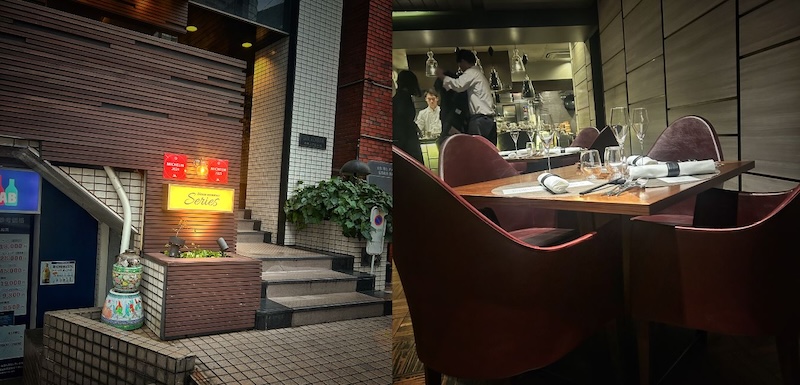
Broths are layered rather than loud; textures are chosen, not accidental; garnishes are there to do work, not simply look pretty.
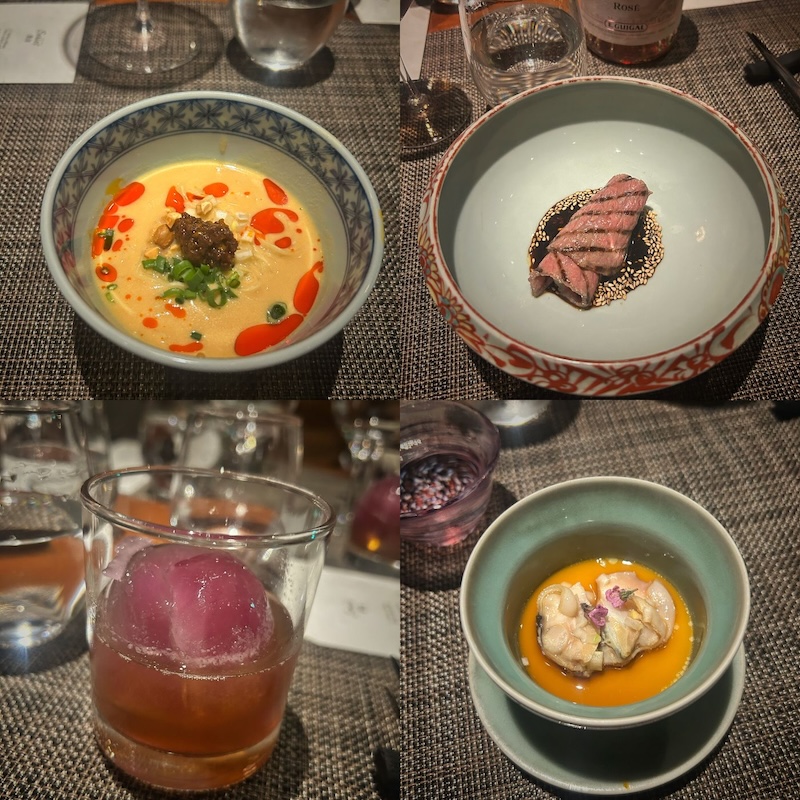
What I appreciated most was the sense that technique served the food rather than stealing the scene. We left talking about a specific sauce, a vegetable cooked to a precise point, a broth that lingered.
The price-to-pleasure ratio is excellent by global standards, and it's a smart way to experience the city's refined side without committing to a multi-hour kaiseki. Book early, dress well but comfortably, and come hungry.
Roughly what to expect: elegant but warm service, a menu that reads coherent rather than fussy, and courses that add up to a memory rather than a checklist. If your list of the coolest restaurants in Tokyo includes one polished, celebratory night, Series is a very good answer.
One Miss (So You Don't Repeat It): Oerbierman in Akihabara
But not all stories are good stories. For instance, this one, when we were forced to eat at a non-local venue.
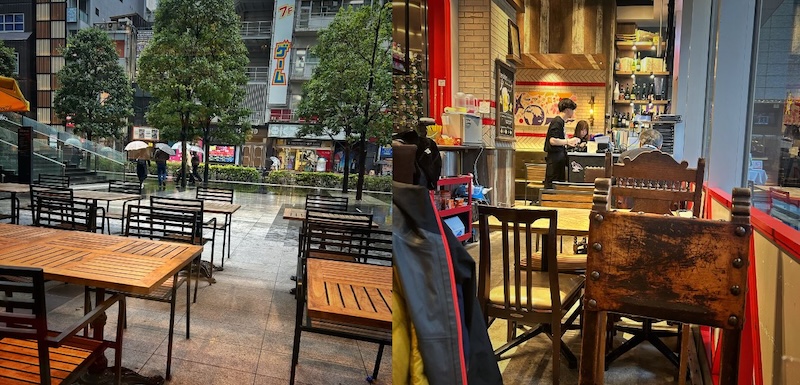
We were drenched and starving in a downpour and ducked into a German beer place in Akihabara—Oerbierman—and it was… not great. Overpriced, underdelivered, and service that felt checked out. Lesson learned: just as in any other place on this planet - don't choose international food.
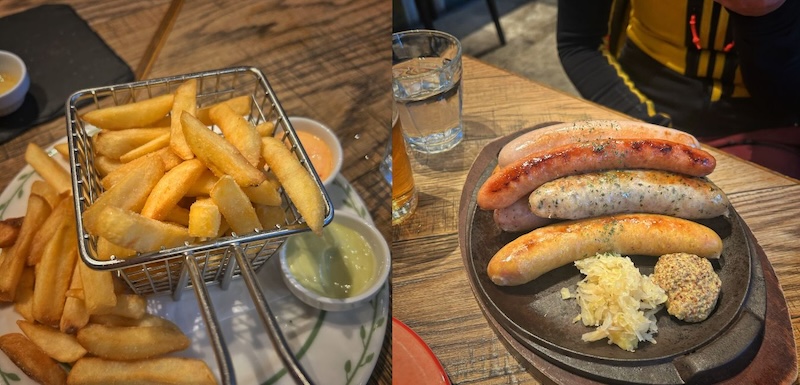
In other words, when in Tokyo, eat Tokyo. If you're craving fried cutlets, go tonkatsu; if you want grilled meat, choose yakiniku or yakitori; if you need beer and bites, pick an izakaya.
Our non-Japanese detour was the only forgettable meal of the trip.
Konbini and Ekiben: Fuel for Your Days (and Trains)
If you're on a budget—or simply curious—convenience stores (konbini) like 7-Eleven, Lawson, and FamilyMart are a cultural experience. People swear by the egg salad sandwiches, onigiri, and limited-edition drinks. I'm not big on bagged snacks, and I'm particular about bread, but it's worth sampling to make up your own mind.
For train days, buy an ekiben at the station: beautifully arranged regional bento boxes that turn travel into a picnic.
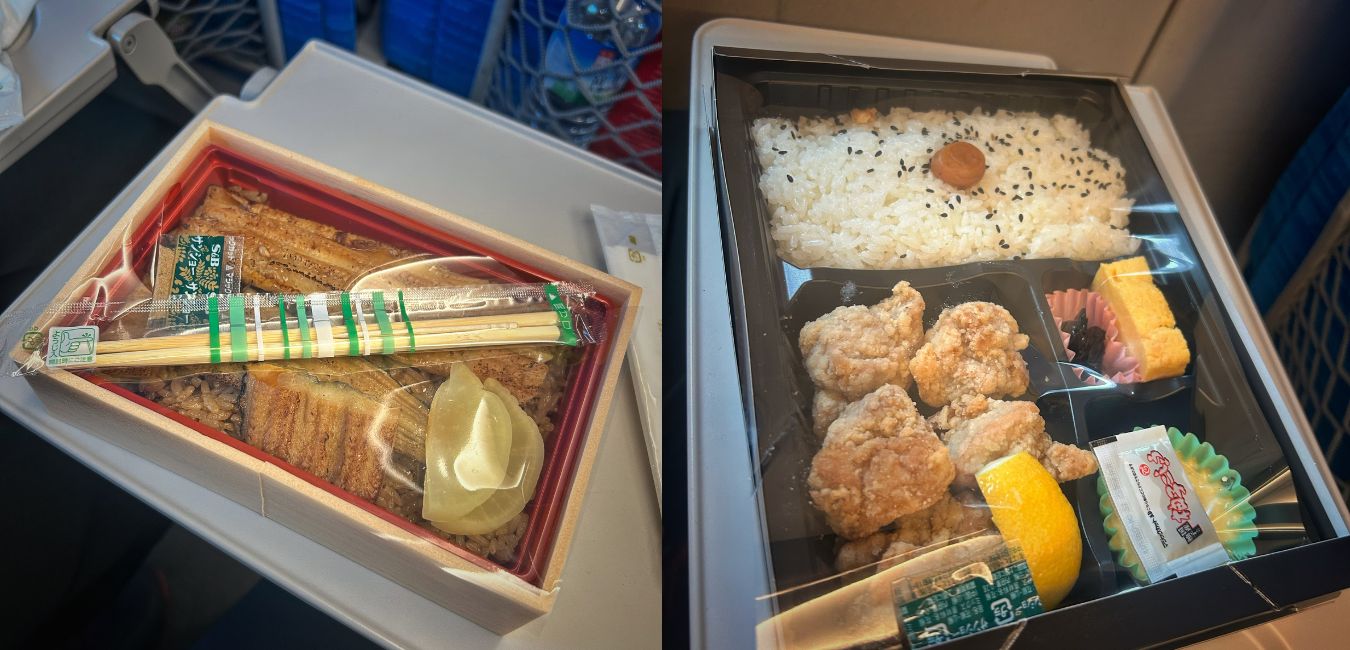
You'll even find self-heating versions that warm when you pull a tab—a small magic trick between stations.
Dishes We Didn't Dive Into Here (But Will in the Next Japan Pieces)
Tokyo alone could fill a year: tempura counters that fry to an audible whisper; soba pilgrimages; unagi (freshwater eel) that melts; okonomiyaki and monjayaki griddled to your preference; curry rice in every mood; regional ramen pop-ups; sweets that deserve their own trip.
We ate many of these during our month in Japan—just not all in Tokyo—and we'll return to them in the next articles.
Drinks: Coffee, Tea, and Everything Else
If you're an espresso die-hard who doesn't drink tea (hello, it's me), your first days might feel sluggish.
There is coffee—specialty cafés and the usual global chains—but it's not Italy.
If you love tea and matcha, you're living the dream.
Beers are plentiful and widely available; Japanese whisky is worth seeking out; and local drinks, such as sake or plum wine, pair naturally with the food.
Don't be shy about asking the staff for a small tasting flight to learn what you like.
Tokyo, the City in Motion: A Short History & How to Navigate
And if you are curious about a small page of history, let me tell you a few things that will satisfy your curiosity.
Modern Tokyo rose from Edo, the samurai capital that swelled around the shogun's castle in the 17th century.
When the imperial court relocated from Kyoto in the late 1800s and the city adopted the name Tokyo ("Eastern Capital"), it accelerated into an experiment in scale: fire, earthquake, and war all forced reinvention, and each rebuild layered new infrastructure on top of the old street plan. That's why you can stand on a corner today and read centuries at once—shrine, postwar brick, bubble-era glass, a brand-new tower—and still duck into a lane that feels older than any map you're holding.
The city's rhythm follows its rails. Neighborhoods form around stations; food follows commuters; and the best way to understand "where am I?" is to look at the train lines rather than a simple north-south map.
That logic explains why restaurants stack vertically: rentable square meters are precious, and mixed-use buildings let dozens of tiny dreams fit into one footprint. It also explains why department-store basements (depachika) are so extraordinary: they're built to feed the river of people moving through stations every hour.
For visitors, the practical takeaway is simple. Load Suica or PASMO into your phone; tap through gates; and assume there's a train, subway, or bus to anywhere you're going.
Big stations—Shinjuku, Tokyo, Shibuya—are cities inside the city. Take your time, follow the signage, and expect to get turned around at least once. We got lost in Shinjuku Station twice. It's normal. Step out for air, pick a new exit, and let the neighborhood reset your compass.
History is the infrastructure: Tokyo is a place that keeps moving forward without erasing where it came from, and eating your way across it is the most delicious way to learn that.
A Night for Music: Cotton Club (Because We Missed Volume)
We missed music during our three weeks—most rooms are quiet, and people keep to themselves. So we booked a table at Cotton Club near Tokyo Station.
The room, sound, and performance delivered exactly what we craved.
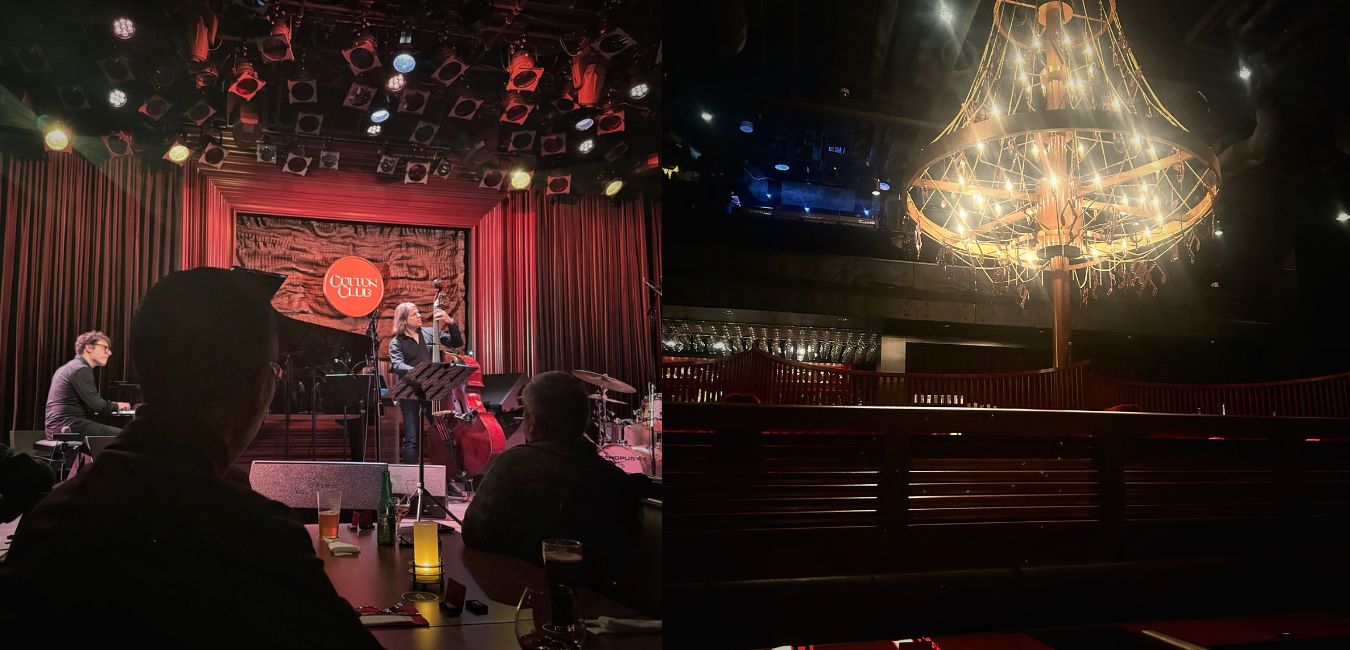
However, the menu reads vaguely European and isn't the reason to go.
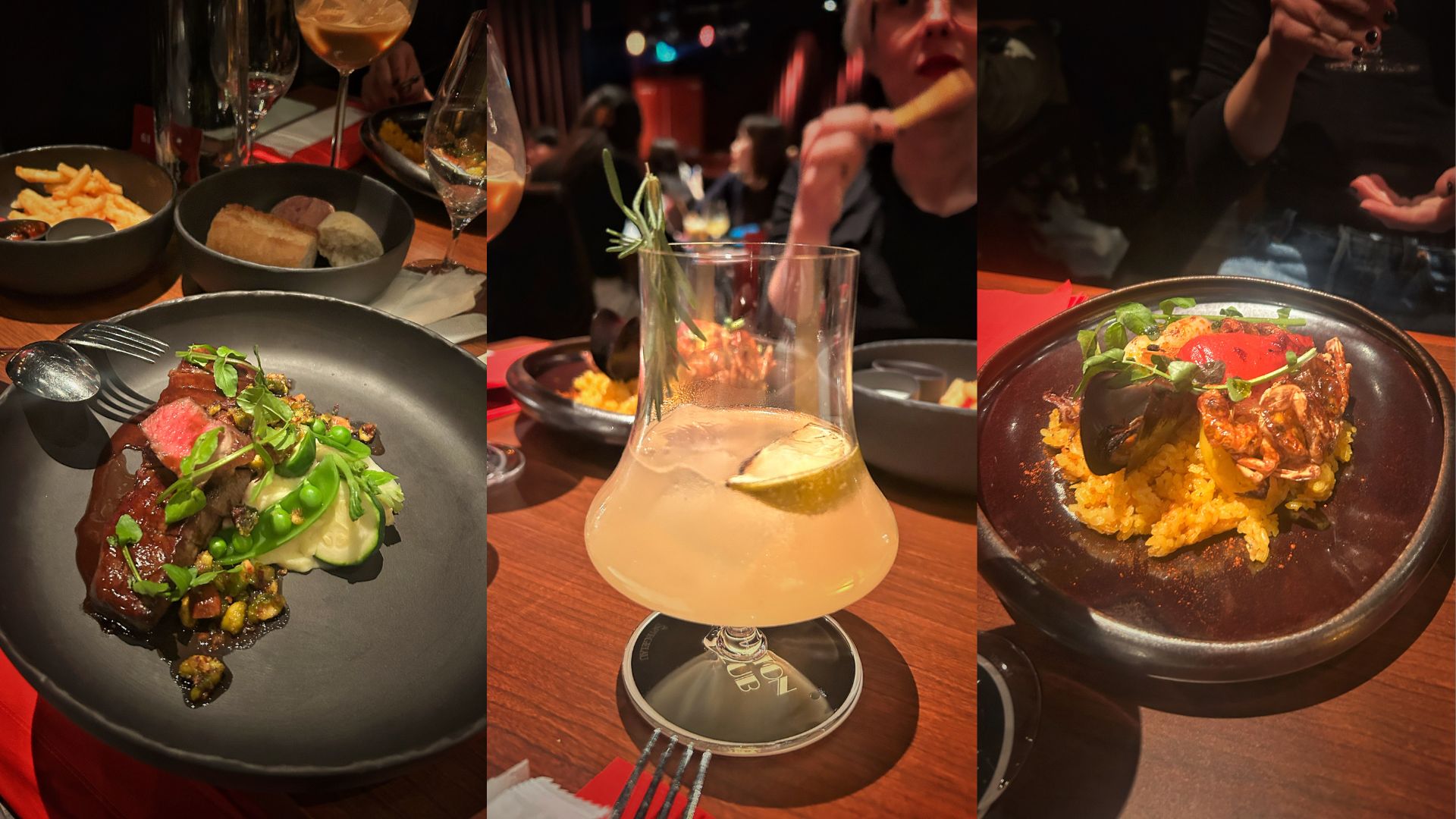
Anyway, keep in mind that you don't need to be a jazz person to enjoy it. If you've been eating in a hush for days, this will reset you.
Etiquette & Getting Around (Read This; It Helps)
- Reserve the dinners that matter. It saves you from lines and "sorry, full" at the door.
- Don't eat while walking. Finish near the shop or sit down; you'll blend in better and enjoy it more.
- Keep trains quiet. Phones on silent, no calls in carriages; step into the inter-car area if you must.
- Don't smoke on sidewalks unless you're in a marked smoking zone. Some wards fine for street smoking.
- Use Suica/PASMO on your phone. Works for trains, subways, buses—and even at many shops and konbini.
- Take your time in mega-stations. Wayfinding is good, but size is a thing. Getting lost is normal; we did.
- Eat what you ordered. Portions are reasonable; wasting food is frowned upon.
- Be mindful of volume. Tokyo dinners tend to be low-key; you'll notice and appreciate it.
FAQ (Short Answers We Wish We'd Had)
Q: Is Tokyo really cheaper to eat than Europe?
A: At many levels, yes. Ramen shops, izakaya, standing sushi, and food halls make it easy to eat well for less than in most Western European capitals. High-end is high-end everywhere.
Q: Do I need reservations?
A: For dinners you care about, absolutely. Use Tabelog; if that fails, message or email. Don't expect WhatsApp replies.
Q: Where should I buy knives and kitchenware?
A: Kappabashi (Kitchen Town) near Asakusa—where locals shop, from everyday tools to collector pieces.
Q: Is it okay to talk on the phone on trains?
A: Keep phones on silent; no calls in the cars. Step into the inter-car space on long-distance trains if you must.
Q: How do I pay for transit?
A: Load Suica or PASMO into your phone wallet and tap. It also works at many shops and 7-Eleven.
Quick Keyword Map (so you can skim)
- tokyo food — depachika, ramen shops, izakaya, tonkatsu; great value at street level.
- ramen tokyo — build a crawl: clean shōyu, rich miso, spicy tantanmen (Tokichirō).
- coolest restaurants in tokyo — a polished splurge (Series), plus vertical hidden rooms and Kichijōji nights.
- good places to eat in shinjuku — wagyu yakiniku in Kabukichō and alley clusters off the main drags.
- best sushi place in tokyo — our personal pick is Tachigui Sushi Tonari for "intimate, attainable, unforgettable."
- tokyo food tour — Asakusa ramen + Kappabashi shopping + an izakaya/yokocho bar hop makes a perfect day.
Conclusion
Tokyo is bottomless—in the best possible way. You won't "finish" it, but you can learn how to eat it: book the dinners that matter, follow the smoke to a charcoal grill, ride the elevator to the place with the unmarked door, say yes to bowls you can't pronounce yet, and let a few carefully chosen reservations anchor the chaos.
Our advice? Start with neighborhoods, trust your nose, and give yourself time to wander. That's where the memories live.
**This article was written in October 2025. Please note that circumstances can change over time. If you discover that any venues mentioned have since closed, kindly inform us. Thank you!


